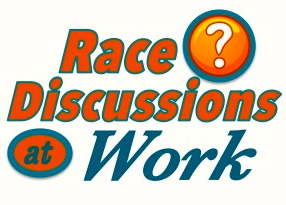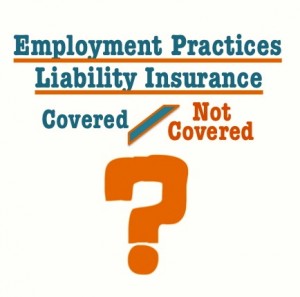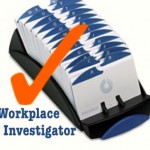 Most employers and their regular counsel and HR managers are by now well aware of an employer’s legal duty to promptly, thoroughly and impartially investigate any complaint of perceived discrimination, harassment, or retaliation. They also generally understand that an employer may avoid liability under Title VII for harassment or discrimination that does not involve an adverse employment action (e.g., termination or demotion) if the employer can demonstrate: (1) it took reasonable steps to prevent and promptly correct sexual harassment in the workplace, and (2) the aggrieved employee unreasonably failed to take advantage of the employer’s preventive or corrective measures.
Most employers and their regular counsel and HR managers are by now well aware of an employer’s legal duty to promptly, thoroughly and impartially investigate any complaint of perceived discrimination, harassment, or retaliation. They also generally understand that an employer may avoid liability under Title VII for harassment or discrimination that does not involve an adverse employment action (e.g., termination or demotion) if the employer can demonstrate: (1) it took reasonable steps to prevent and promptly correct sexual harassment in the workplace, and (2) the aggrieved employee unreasonably failed to take advantage of the employer’s preventive or corrective measures.
This principle is often commonly referred to as the “Faragher/Ellerth affirmative defense,” a reference to the following two 1998 United States Supreme Court decisions: Faragher v. City of Boca Raton, 524 U.S. 775 (1998) and Burlington Industries, Inc. v. Ellerth, 524 U.S. 742 (1998). In 1999, the EEOC updated its earlier guidance on the issue of vicarious liability for harassment by supervisors to incorporate the Faragher and Ellerth decisions and issued its “Enforcement Guidance on Vicarious Employer Liability for Unlawful Harassment by Supervisors.”
Due to the importance of conducting legally sound investigations of harassment and discrimination complaints and given the increasing sophistication of the workplace discrimination laws, many employers use attorneys to conduct these types of investigations. Often, they will also, as a matter of course, use their regular counsel (in-house or outside) to do the investigation, with minimal to no strategic consideration of that selection decision or evaluation of the potential conflict issues.
$300,000 in Sanctions Highlights Risks in Using Regular Counsel to Conduct Internal Workplace Investigation
A recent $300,000 sanction against an employer by a federal court in Ohio stemming (at least in part) from an employer’s use of its regular counsel to conduct an investigation that it later asserted as a Faragher/Ellerth affirmative defense serves as a cautionary tale for employers and their regular counsel in the importance of making strategic, thoughtful decisions when selecting legal counsel to conduct an investigation into an internal complaint covered by Title VII.
The case to which I’m referring is EEOC et al. v. Spitzer et al, currently pending in the U.S. District Court of the Northern District of Ohio. The case went to jury trial in February of this year only to end in a mistrial 7 days into the jury trial after it was discovered that the employer had failed to produce the investigation notes of the attorney who conducted the internal workplace investigation into the plaintiff employees’ complaints of discrimination, harassment and retaliation. In ordering the mistrial, the judge was also concerned that the employer had failed to maintain originals of the investigation documents. Click here to read more about the case and the judge’s order of a mistrial.
Following the mistrial, the plaintiffs filed a motion asking the judge to order the employer and its counsel to pay their attorneys’ fees and costs. In a sternly written 18-page order, the trial judge granted the plaintiffs’ motion and ordered the employer and its counsel to pay over $300,000 to the plaintiffs. In addition to the amount of the award, this sanction is also significant in that the judge ordered the award be issued against “all defense counsel” and that they be “jointly and severally” liable with the corporate employer. As my attorney readers know, that means that the plaintiffs may collect the entire $300,000 award from any one of the parties, or from any and all of the parties in various amounts until the full amount is collected.
In noting that because the employer had “relied heavily on the Faragher-Ellerth defense in this matter”, the “heart of the defense would necessarily center around how [the employer] responded to an investigated complaints of harassment and discrimination,” the trial judge’s analysis also hints at the conflict of interest that lurks in the background anytime an employer asserts the Faragher/Ellerth affirmative defense. In those cases, because the investigation itself often becomes a matter of factual dispute, the attorney who investigated the employee complaint will very likely be called as a fact witness at trial.
In the Spitzer case, Rule 3.7 of the Ohio Rules of Professional Conduct applies. It provides, in pertinent part, as follows:
RULE 3.7: LAWYER AS WITNESS
(a) A lawyer shall not act as an advocate at a trial in which the lawyer is likely to be a necessary witness unless one or more of the following applies:
(1) the testimony relates to an uncontested issue;
(2) the testimony relates to the nature and value of legal services rendered in the case;
(3) the disqualification of the lawyer would work substantial hardship on the client.
(b) A lawyer may act as an advocate in a trial in which another lawyer in the lawyer’s firm is likely to be called as a witness unless precluded from doing so by Rule 1.7 or 1.9.
In looking at the court docket, I note that the law firm where two of the attorneys who conducted the internal workplace investigation that was relied on in the employer’s assertion of the Faragher/Ellerth affirmative defense is still listed (as of this writing) as litigation defense counsel. As such, it would appear in the Spitzer case that the parties and presumably the trial judge have determined that subsection (b) to Rule 3.7 applies, thereby allowing an attorney within the same firm to continue to serve as an advocate even though other attorneys at that same firm will be called as fact witnesses. It is also quite possible, however, that plaintiffs’ counsel has strategically refrained from raising this issue, concluding that their clients are better served by using this fact to attack at trial the lack of impartiality in the underlying internal investigation. If they are successful in this line of attack, the employer’s Faragher/Ellerth affirmative defense will fail.
In reviewing the judge’s order, the following paragraph also deserves special focus as it highlights the tension that can be created when an employer’s regular counsel is used to conduct the investigation. As discussed above, the EEOC guidance and most subsequent court decisions require an employer demonstrate as a part of its Faragher/Ellerth affirmative defense that its investigation into the employee’s complaint was not only prompt and thorough but also impartial.
Here is the relevant excerpt from the trial judge’s award of $300,000 in sanctions. Query whether the employer’s regular counsel assigned to conduct the internal investigation into the plaintiff employees’ complaints was impartial?
Pena notes
During May of 2006, Attorney Pena was performing work in Giardini’s law firm and was assigned to investigate Okafor’s complaint. Pena admits that she took notes of a conversation she had with Dombrowski and took notes of interviews she performed with 12 other Sptizer employees. Pena claims that she later converted her handwritten notes to typed statements. Those typed statements were later signed by the employees. Pena also asserts that “the written states which [she] prepared accurately and the best of [her] recollection at the time completely reflected the statements given to [her\ by those employees[.]” It is undisputed that Pena’s handwritten notes were not provided before trial. Spitzer, however, contends that no prejudice stems from this non-production because the undated, typed statements were provided. It is these undated statements that Spitzer altered by removing fax headers and caused the initial concerns for the Court.
As Plaintiff’s have highlighted, the typed statement from employee Wane Andrews reads: “I have worked with Jim Dombrowski for two years and have never heard a racist comment from him. Jim usually makes the other employees tone down their comments.” In contrast, Pena’s notes indicate that Andrews witnessed Dombrowski page Okafor with a “Nairobi accent.” In her notes, Pena comments as follows on that statement: “BAD for US.” At a minimum, Andrews’ typed statement is not all inclusive of his verbal interview.[footnote deleted]. Instead, it is apparent that only the most favorable points of Andrews’ statement were included in the typed statement that was ultimately provided. Once again, without these notes, Plaintiffs could not effectively engage in discovery related to Andrews and Pena. Moreover, Spitzer again has failed to offer any reasonable explanation for its failure to produce the notes.
One common way that plaintiff employees attempt to defeat an employer’s Faragher/Ellerth affirmative defense is to demonstrate that the employer’s investigation was not impartial. In the Spitzer case, it would seem that the above-described handwritten notes of the attorney investigator would be plaintiff employees’ exhibit 1. Especially when compared to the typed witness statement she subsequently produced, it seems difficult, if not impossible, to articulate any successful argument that she was engaged in an impartial investigation.
Consider, for example, her use of the phrase “BAD for US” in her handwritten notes. At minimum, it demonstrates she viewed herself as “us.” Any explanation to the contrary would seem to fail when considered in light of the fact that she did not include in the written witness statement the “BAD for US” statement to which she was referring, i.e. the use of a Nairobi accent when the plaintiff employee was paged.
Insights and Guiding Principles for Employers and Their Regular Counsel
It is common and even appropriate and strategically sound in some circumstances for employers to use their regular counsel (in-house or outside) to conduct internal workplace investigations of employee claims of harassment, discrimination, or retaliation. Indeed, I have done so as both in-house counsel and as an employer’s regular outside counsel.
In writing this blog, I am in no way arguing for a bright line prohibition against the use of an employer’s regular counsel or even arguing that an employer should always use an attorney to conduct these types of internal workplace investigations. What I am urging, however, is for employers and their regular counsel to make these decisions in a more thoughtful and strategic way. I also acknowledge that my own thinking on this topic has evolved and grown sharper over the 23 years I have been practicing law.
Today, my general practice is to suggest that employers and their regular counsel faced with the need to conduct a prompt, thorough and impartial investigation have the employer’s regular counsel retain a separate employment attorney who specializes in conducting these types of impartial fact-finding investigations. Under this type of retention agreement, the retained attorney workplace investigator works at the direction of the employer’s regular counsel and conducts an independent investigation and provides employer’s counsel with factual findings so that the regular counsel can provide legal advice to the employer.
Structuring the retention agreement in this manner provides the employer with all of the benefits of having an experienced employment attorney conduct the investigation while at the same time avoids the problems discussed above that can arise if the same attorney conducts an internal investigation and is called upon to represent the client in a continuing dispute with the employee. Structuring the retention agreement in this manner also provides the employer and its regular counsel the flexibility of deciding at a later point whether to utilize the investigation and its findings should litigation ensue. Should the employer and its regular counsel decide not to waive the attorney-client privilege and another party subsequently seeks discovery about the underlying investigation, the employer will be able to assert both the attorney-client privilege and the attorney work product doctrine. In structuring the retention agreement in this manner, and thereby bifurcating the finding of facts from the legal analysis, it is also important to note that should a court later hold that sufficient grounds exist to allow discovery of the attorney work product that it will be much easier for the employer to produce only the underlying facts and avoid the inadvertent waiver of the attorney-client privilege.
Although I am not aware of any case law on this point, it would also seem (at least in some situations) that structuring the retention agreement in this manner also leaves open the possibility the employer could preclude discovery of the investigation by arguing that the attorney expert investigator was serving as a consulting expert to the employer’s regular counsel. Essentially, the separate attorney expert workplace investigator was acting as a professional, expert fact finder and helping the regular counsel understand the relevants facts so that the regular counsel could prepare the litigation strategy and provide legal advice to the employer. Obviously, this argument would only be available where the employer’s counsel decided not to assert the Faragher/Ellerth affirmative defense.
Based on the above considerations, I offer the following two guiding principles for employers and their regular counsel:
- An employer’s regular counsel who is asked to conduct an internal investigation of claims implicating Title VII should anticipate the conflict of interest presented if the employer subsequently decides to assert the Faragher/Ellerth affirmative defense and only agree to conduct the investigation after informing the employer of this potential conflict and obtaining the employer’s consent to go forward with this understanding.
- If the employer decides to assert the Faragher/Ellerth affirmative defense, neither the attorney who conducted the underlying internal workplace investigation nor his or her law firm should act as defense counsel in any ensuing litigation.
Hat tip: A hat tip to my friend, fellow blogger and expert, attorney workplace investigator, Sindy Warren in Cleveland, Ohio for bringing the trial judge’s award of sanctions to my attention via her blog article. To read her article, click here.
___________________________________________________
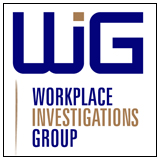 Workplace Investigations Group is headquartered in Atlanta, GA and has a nationwide directory of professional workplace investigators who are all attorneys with a minimum of ten years of employment litigation experience. For more information: www.Workplace-Investigations-Group.com
Workplace Investigations Group is headquartered in Atlanta, GA and has a nationwide directory of professional workplace investigators who are all attorneys with a minimum of ten years of employment litigation experience. For more information: www.Workplace-Investigations-Group.com
 I’m probably one of the few mediators in the country who has literally sat at every seat at the proverbial workplace mediation table.
I’m probably one of the few mediators in the country who has literally sat at every seat at the proverbial workplace mediation table.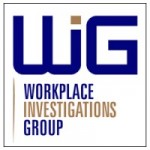 Workplace Investigations Group is headquartered in Atlanta, GA but has a national directory of professional workplace investigators who are all attorneys and have a minimum of ten years of employment litigation experience. As such, wherever the workplace issue arises, corporate counsel and employers can easily identify an investigator who can respond to the regional need quickly, impartially and competently. For more information: www.Internal-Investigations.com
Workplace Investigations Group is headquartered in Atlanta, GA but has a national directory of professional workplace investigators who are all attorneys and have a minimum of ten years of employment litigation experience. As such, wherever the workplace issue arises, corporate counsel and employers can easily identify an investigator who can respond to the regional need quickly, impartially and competently. For more information: www.Internal-Investigations.com 

